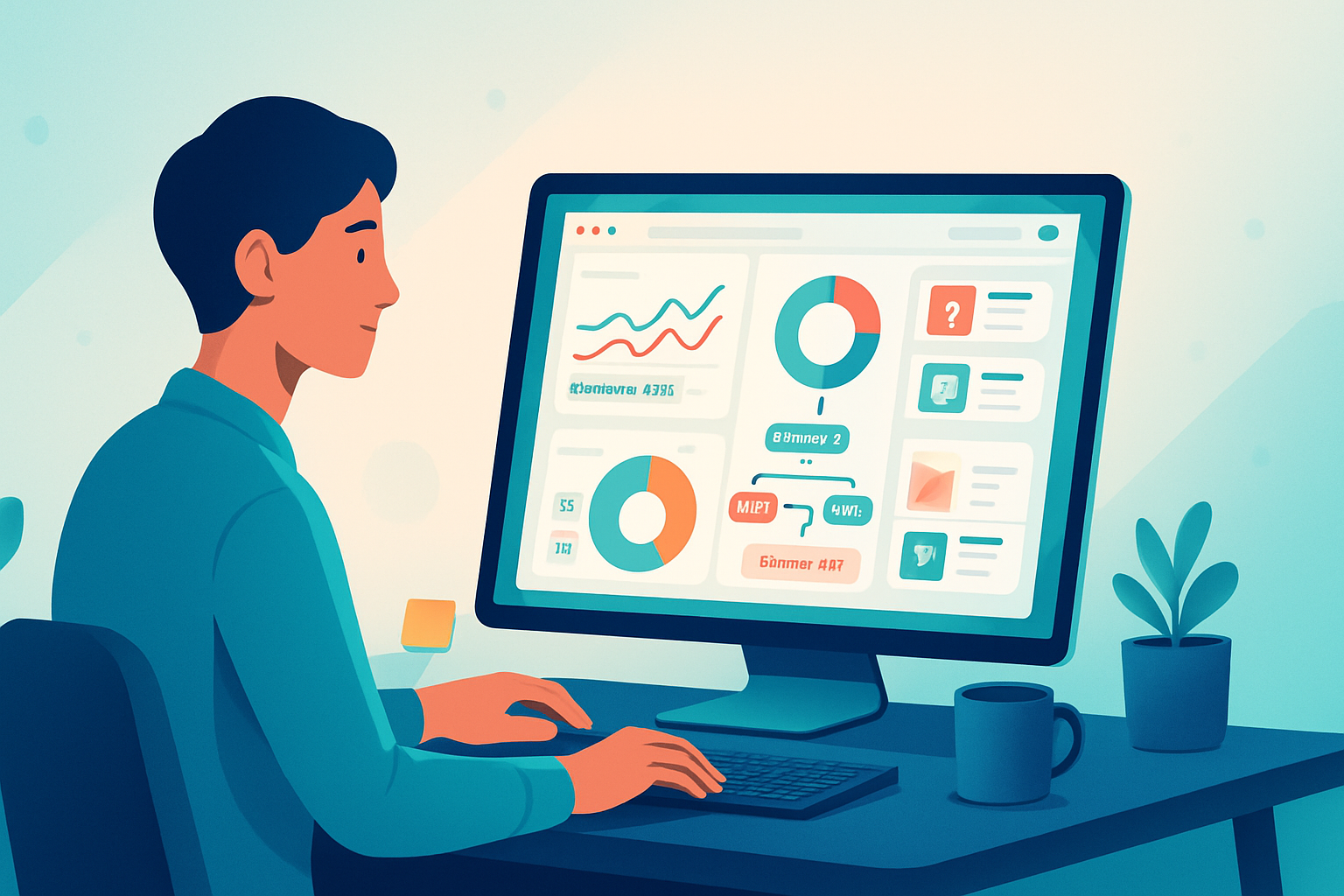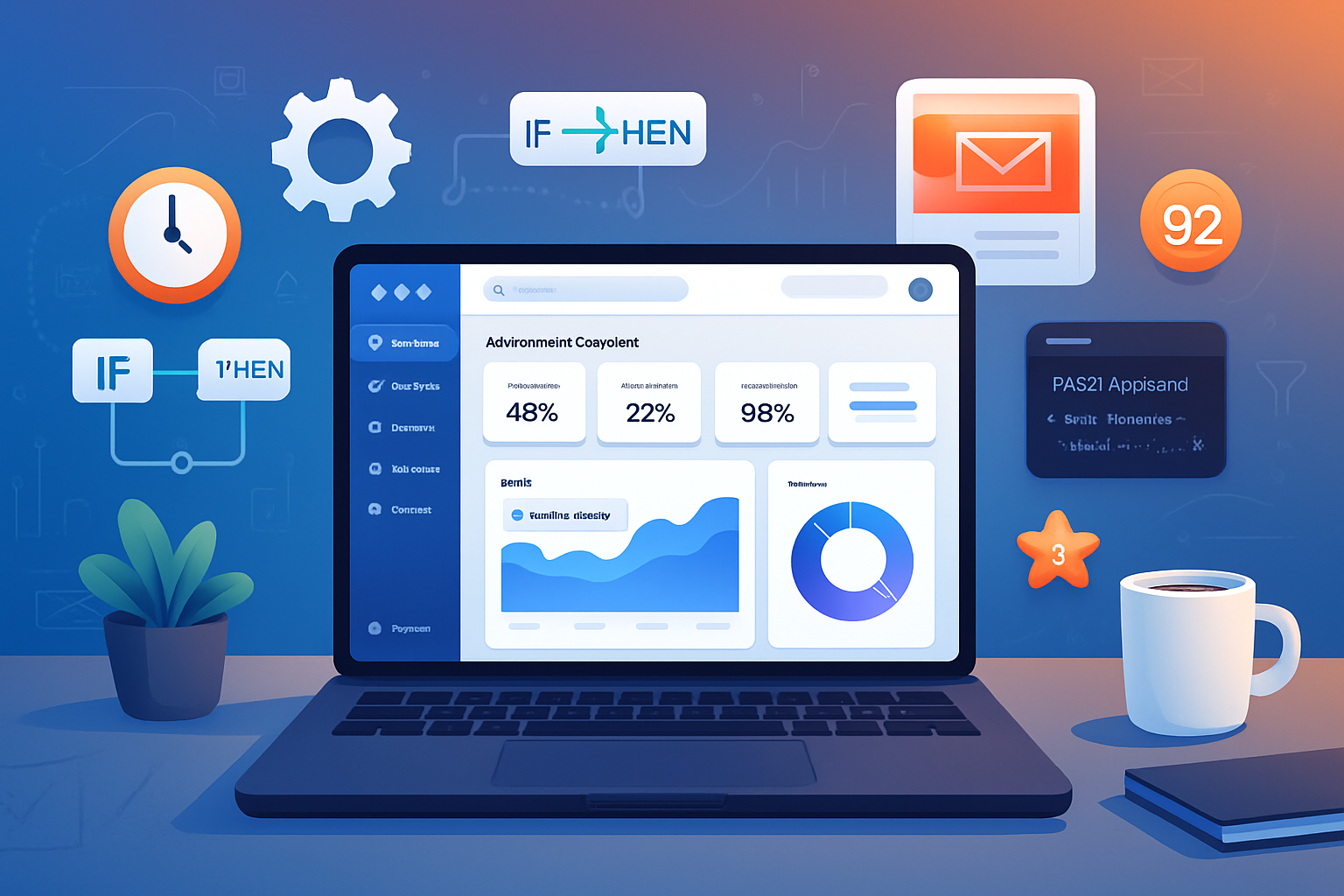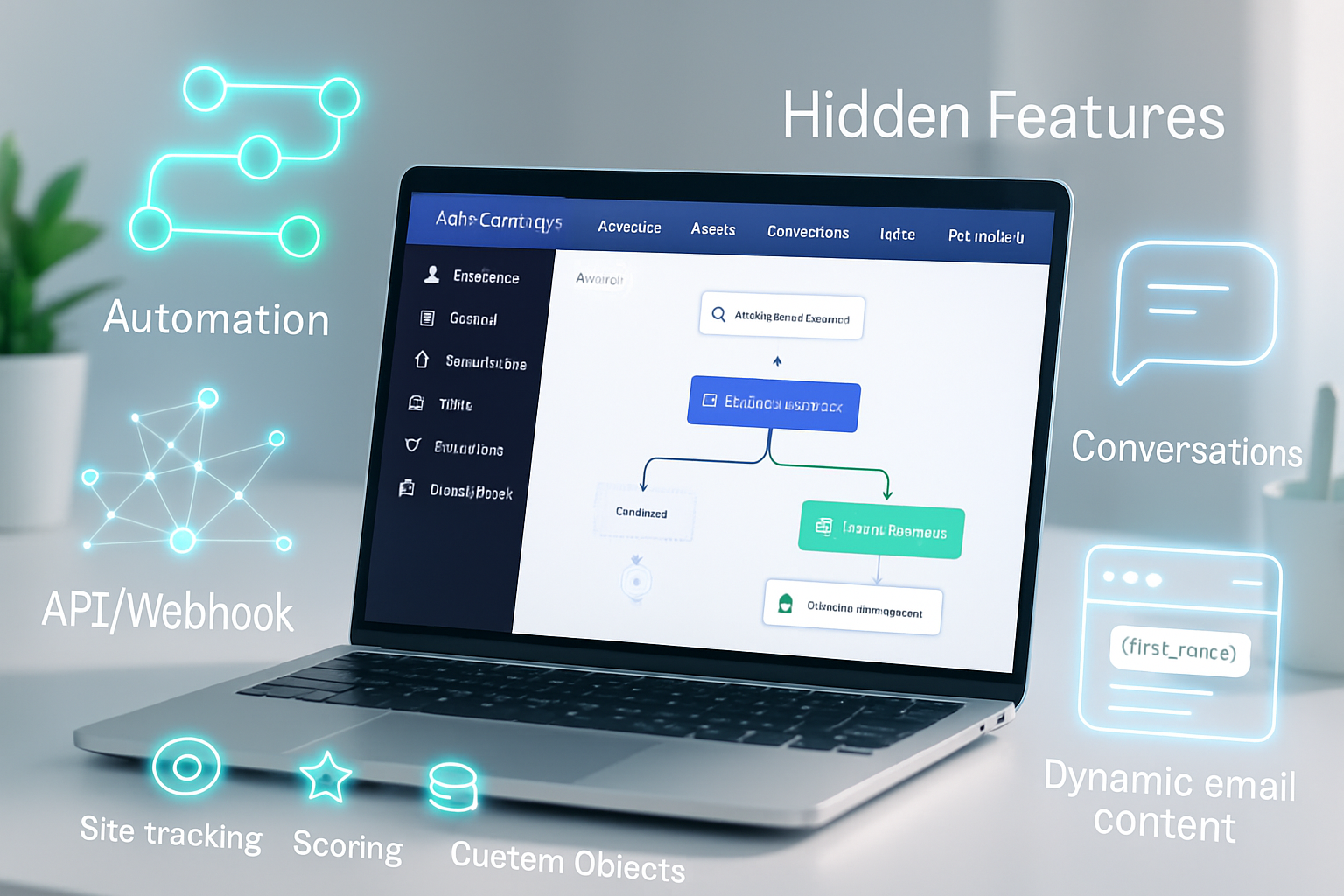· marketing · 6 min read
Maximizing Your ROI with Klaviyo: 7 Game-Changing Strategies
Discover seven advanced, actionable strategies to boost ROI using Klaviyo - from laser-focused segmentation and Liquid-powered personalization to omnichannel flows and real-time analytics - plus measurement templates and a 30/60/90 day playbook.

Introduction
Klaviyo is more than an ESP - it’s a revenue engine when used strategically. This post walks through seven game-changing strategies to maximize return on investment (ROI) from your Klaviyo implementation, with clear tactics, Liquid examples, measurement formulas, and a 30/60/90-day action plan.
Why focus on ROI?
Every email or SMS touch should move the needle on revenue, lifetime value (LTV), or retention. The right combination of segmentation, personalization, automation, and measurement turns Klaviyo from a messaging tool into a scalable revenue channel.
Strategy 1 - Laser-focused segmentation: speak to who they are, not everyone
Why it matters
Broad blasts dilute relevance. Segmentation lets you match message to intent, purchase history, lifecycle stage, and predicted value.
Tactics
- Use event-based and profile properties (Placed Order, Viewed Product, Klaviyo’s predicted_lifetime_value).
- Create value-based segments (e.g., high LTV but inactive) to prioritize high-impact campaigns.
- Build behavior windows - short-term (7–14 days) for urgency; medium-term (30–90 days) for lifecycle playbooks.
Example segment ideas
- Recent purchasers (last 30 days) who haven’t returned in 14 days.
- Browsed product X three times but never purchased.
- Predicted_lifetime_value >= $500 and not purchased in 120 days.
Resources
- Klaviyo segmentation docs: https://help.klaviyo.com/hc/en-us/articles/115005078927
Strategy 2 - Personalization at scale with Liquid and dynamic content
Why it matters
Personalization drives engagement and conversion. Klaviyo’s Liquid and dynamic content blocks let you tailor subject lines, hero images, and product recommendations per recipient.
Practical ideas
- Use profile properties and event data to populate copy and offers.
- Leverage dynamic product recommendations or a product feed for cross-sell/up-sell.
- Show predicted next purchase windows or tailor discounts to customer value.
Liquid snippet (use in email templates)
{% assign fname = person.first_name | default: "Friend" %}
<p>Hey {{ fname }}, here are items you might love:</p>
{% for item in recommendations.items limit:3 %}
<div>
<img src="{{ item.image_url }}" alt="{{ item.name }}" />
<p>{{ item.name }}</p>
<p>{{ item.price | money }}</p>
</div>
{% endfor %}Best practices
- Fallbacks are essential (default values for missing data).
- Keep personalization useful - don’t swap a word for the sake of personalization.
Resources
- Klaviyo personalization & Liquid docs: https://help.klaviyo.com/hc/en-us/articles/115005082927
Strategy 3 - Build high-converting automated flows and optimize them continuously
Why it matters
Flows (welcome, cart abandonment, post-purchase) are where predictable revenue lives. Optimized flows turn new visitors into customers and customers into repeat buyers with minimal incremental spend.
High-impact flows
- Welcome series with progressive profiling and a value-first offer.
- Cart & checkout abandonment flow with dynamic cart contents.
- Browse abandonment and back-in-stock flows.
- Post-purchase - receipt, cross-sell 3–7 days later, review request 14–21 days.
- Win-back & re-engagement flows with tiered incentives.
Optimization tips
- Use flow splits to test different subject lines, offers, or timing.
- Add flow filters & smart sending to avoid over-messaging.
- Monitor conversion windows and adjust cadence based on revenue per message.
Resources
- Klaviyo flow examples: https://www.klaviyo.com/resources
Strategy 4 - Orchestrate email + SMS for omnichannel reach
Why it matters
Combining SMS and email in a coordinated sequence lifts conversion and shortens time to purchase. SMS is high-immediacy; email is high-detail.
Best practices
- Obtain explicit SMS consent and manage consent properties.
- Use SMS for time-sensitive nudges (cart reminders, flash sales), email for richer content.
- Use cadence rules - e.g., email first, SMS after 12–24 hours if no action.
- Track and segment based on channel responsiveness (SMS-only buyers vs. email-first buyers).
Example sequence
- Abandoned cart email (30 minutes) with cart contents.
- Reminder email (6–12 hours).
- SMS reminder (24 hours) with short CTA and link.
Resources
- Klaviyo SMS guide: https://help.klaviyo.com/hc/en-us/sections/360007614373-SMS
Strategy 5 - Use real-time analytics, cohort analysis, and attribution to measure what matters
Why it matters
Without clear measurement, you’re guessing. Real-time analytics and cohorts let you attribute revenue to flows/campaigns and understand long-term impact.
Key metrics and formulas
- ROMI (Return on Marketing Investment) = (Revenue from channel - Cost of channel) / Cost of channel
- ROI (simple) = (Revenue - Spend) / Spend
- Revenue per recipient (RPR) = Total revenue attributed / Number of recipients
- Customer Acquisition Cost (CAC) = Total marketing spend / New customers acquired
- LTV:CAC ratio - target >= 3:1 for healthy growth
Cohort analysis
- Compare cohorts by acquisition source, campaign, or flow variant to see retention and LTV differences.
- Track 7/30/90-day revenue per cohort.
Attribution
- Use UTM parameters in links and Klaviyo’s built-in revenue tracking to attribute campaign revenue properly.
- Implement last-click vs. multi-touch attribution in your analytics stack and align Klaviyo reporting with your broader analytics.
Resources
- Klaviyo metrics & reporting: https://help.klaviyo.com/hc/en-us/articles/115005077927
Strategy 6 - Test and iterate: A/B and multivariate experiments that move revenue
Why it matters
Small percentage lifts compound. Tests on subject lines, send times, content, and flow timing produce measurable revenue increases.
Testing roadmap
- Start with subject line and preheader A/B tests for campaigns.
- Run content block A/B tests in flows (e.g., variant A - review CTA; variant B: cross-sell CTA).
- Implement holdout groups (e.g., 5–10% control) to measure incremental lift of campaigns/flows.
Statistical considerations
- Calculate sample sizes and significance before declaring winners.
- Use Klaviyo’s built-in A/B tools for simple tests; for complex multivariate tests, export metrics and analyze offline if needed.
Resources
- Klaviyo A/B testing: https://help.klaviyo.com/hc/en-us/articles/360034535471-A-B-Testing
Strategy 7 - Prioritize deliverability, list hygiene, and data quality
Why it matters
Even the best creative fails if messages don’t land. Maintaining a healthy sending reputation keeps inbox placement high and costs low.
Tactical checklist
- Implement SPF, DKIM, and DMARC. Use dedicated sending domains if possible.
- Warm new IPs slowly; monitor complaint rates and unsubscribe rates.
- Use double opt-in or at least clear consent capture.
- Clean your lists - suppress stale addresses, suppress hard bounces and spam traps.
- Monitor deliverability metrics - inbox placement, bounce rate, spam complaints, and engagement over time.
Resources
- Deliverability basics: https://help.klaviyo.com/hc/en-us/articles/360037335991
Measurement framework: set goals, dashboards, and cadence
Define goals
- Revenue target attributable to Klaviyo (monthly/quarterly).
- Customer conversion and retention targets (e.g., 30-day repeat purchase rate).
- Channel-specific benchmarks - RPR, conversion %, click-to-open (CTOR).
Build dashboards
- Create a Klaviyo dashboard with revenue by flow, campaign revenue, open rates, click rates, and unsubscribe/complaint rates.
- Add cohort/LTV widgets and a campaign ROI tile.
Reporting cadence
- Weekly - campaign performance and high-level flow health.
- Monthly - cohort LTV, ROMI, CAC vs. LTV.
- Quarterly - strategy review and experiment roadmap.
Practical 30/60/90 day playbook
First 30 days
- Audit current flows, segments, and send domains. Fix deliverability issues and consent capture.
- Implement top 3 high-impact segments (high LTV lapsed, recent purchasers, cart abandoners).
- Launch or refine welcome series and cart abandonment flow.
Next 60 days
- Add dynamic product recommendations & Liquid personalization into emails.
- Set up SMS integration and one coordinated email+SMS flow.
- Start A/B tests - subject lines and offer levels.
90 days and beyond
- Build cohort dashboards and measure LTV by acquisition channel.
- Iterate flows based on conversion data; scale winners.
- Implement holdout tests for incrementality and begin predictive LTV-targeted offers.
Quick wins checklist
- Enable or verify SPF/DKIM.
- Create a high-value reactivation segment and send a targeted win-back.
- Add fallback values for all Liquid fields.
- Implement one email+SMS coordinated flow for abandonment or flash sale.
- Start a simple A/B test with a statistically meaningful sample.
KPIs to watch (and targets to aim for)
- Revenue per recipient (RPR) - varies by business; aim to improve month-over-month.
- Conversion rate from flow - Cart flows typically 5–15%+, welcome flows 2–10% depending on offer.
- Open rate (email) - benchmark by industry; focus on improving relevance rather than chasing arbitrary numbers.
- Click-to-open rate (CTOR) - higher indicates good creative and clear CTAs.
- Unsubscribe and complaint rates - keep unsubscribe <0.5% and complaints <<0.1%.
Common pitfalls to avoid
- Over-personalization without value - swapping names alone won’t cut it.
- Ignoring channel consent and compliance for SMS.
- Failing to align Klaviyo attribution with your overall analytics.
- Letting deliverability slide as volume scales.
Conclusion
Klaviyo is capable of driving outsized ROI when you combine intelligent segmentation, Liquid-powered personalization, coordinated omnichannel flows, rigorous testing, and crisp measurement. Focus on the highest-leverage flows and segments first, instrument measurement for attribution and cohorts, and iterate quickly using test-and-learn cycles. Over time, small lifts compound into meaningful revenue growth.
References
- Klaviyo segmentation: https://help.klaviyo.com/hc/en-us/articles/115005078927
- Klaviyo flows & automation: https://www.klaviyo.com/resources
- Klaviyo SMS: https://help.klaviyo.com/hc/en-us/sections/360007614373-SMS
- Klaviyo metrics & reporting: https://help.klaviyo.com/hc/en-us/articles/115005077927
- Klaviyo deliverability: https://help.klaviyo.com/hc/en-us/articles/360037335991



